
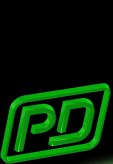
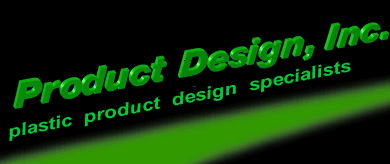
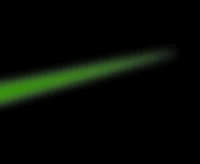



Pro/ENGINEER Surface Modeling
Surface
modeling skills allow the designer to move beyond the basic shapes that
are used in solid modelers. By understanding the theory of how light reflects
off of 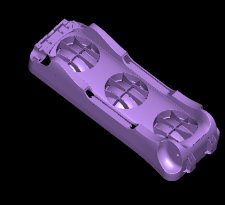 surfaces
and how the human eye perceives this reflected light an experienced surface
modeler can turn a clunky design into a freeflowing organic shape that
catches the eye of the customer and stands out against the competition.
surfaces
and how the human eye perceives this reflected light an experienced surface
modeler can turn a clunky design into a freeflowing organic shape that
catches the eye of the customer and stands out against the competition.
Advanced Surfacing Techniques
To make good looking plastic parts you need to understand the principals of G2 or C2 curvature continuity and how to use these principals when creating a design. The attractive free flowing shapes that you see on the market are almost always created in a high end surface modeler like Pro/Engineer that can create and check for curvature continuous conditions. These good looking plastic part designs usually have no flat surfaces or constant radius rounds. These designs are based on splines and conic sections that blend into each other in a curvature continuous condition. If a model is created with the major visible surfaces being curvature continuous the human eye can detect no instant changes in curvature and therefore perceives the surface to be continuous and "correct".
Since
it is difficult for solid models to maintain curvature continuity between
multiple surfaces most solid models are constructed with flat faces, single
plane curves, and constant radius rounds. The joint where a flat or a
curve transitions into another round has an instant change of curvature
that is detected by the human eye and is interpreted as "something being
wrong" even if the flat surface is perfectly tangent to the round . This
condition is what makes 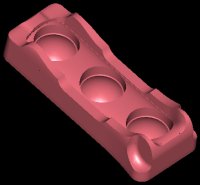 a
solid model look "clunky" next to a nearly identical surface
model created by an experienced surface modeler that understands curvature
continuous conditions.
a
solid model look "clunky" next to a nearly identical surface
model created by an experienced surface modeler that understands curvature
continuous conditions.
The "Master Model Merge" technique is a great time saver if you want a look to extend across multiple parts. In this technique one "master model" creates the appearance of the overall skin of the part. This master model is referenced by the various parts such as doors, plugs or others that must be physically different but still continue the shape of the overall skin. Updates to the master model are passed to the individual parts keeping the parts in sync during the entire design process. The pictures at right shows the master surface model that we used to develop the KR Industries "Special Edition 2 Ball Rolling Bowling Ball Bag" and the Brunswick "Zone Pro 2 Squared Roller" using the master model merge technique and curvature continuous styling. The purple image at the top of the page is the final molded part. They're now now best sellers!
Solid Modeling is Not Enough
Modern solid modeling programs have greatly increased the ease with which complex designs can be created. However, if your products need to look good solid modeling by itself will not give you the best looking product. The proven technique for making good looking products is to create an appearance surface quilt in a high end surface modeler, use the surface analysis tools in the surface modeler to optimize the surface, create a solid from the appearance surface, and then use solid modeling techniques to finish the parts with ribs, draft, rounds, etc. If you want to create better looking products Product Design has the in house experience applying surface modeling techniques to the design of good looking plastic parts to create products that look better and sell better.
Product
Design, Inc.
5100 Main St. LL102
Downers Grove, Illinois 60515
Phone: 630.663.1642
Fax: 630.663.4552
Home | Product Development | Concepts | Engineering | Moldflow

